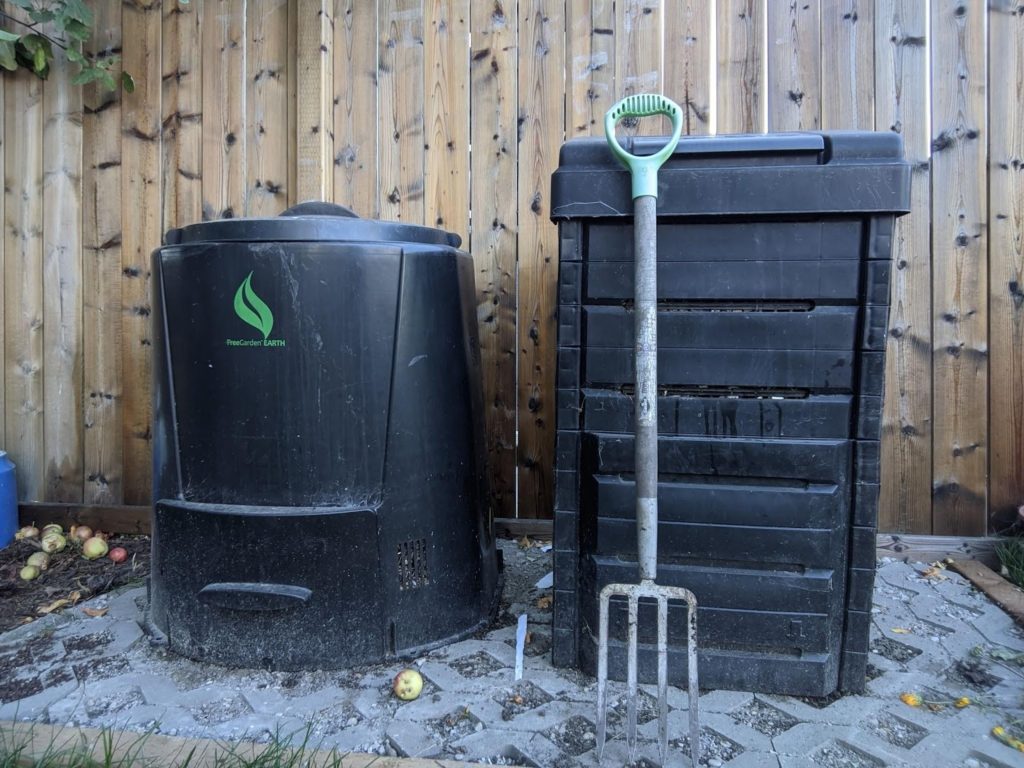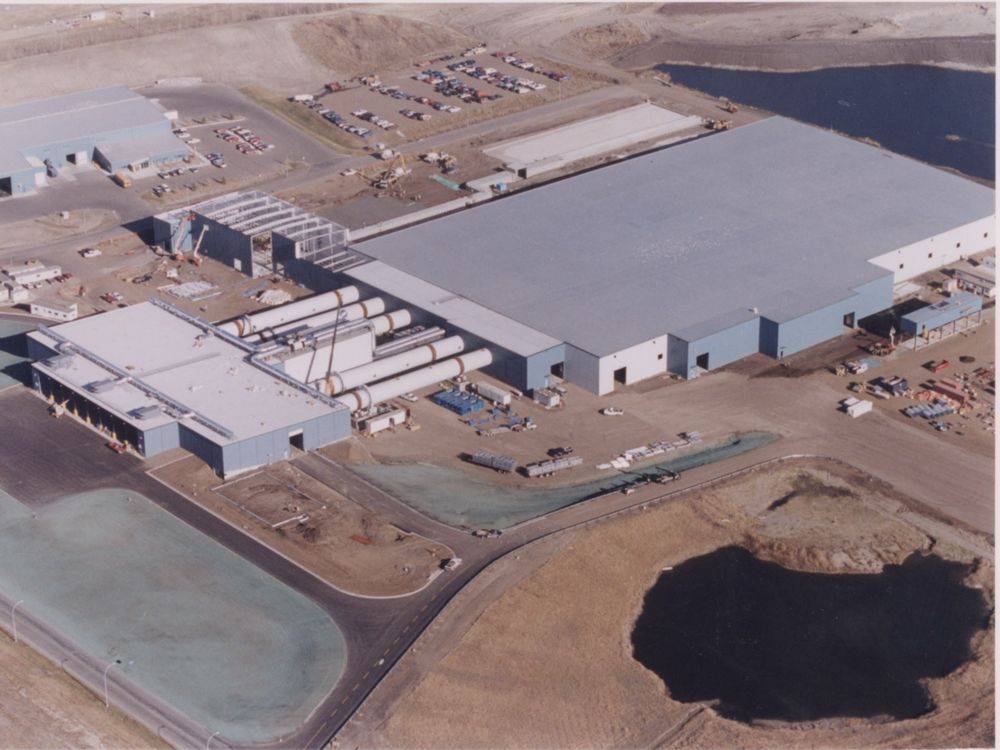
Fall is here in Edmonton! Many people I talk to about composting think it’s not worth getting started right now. But fall is a great time to start a backyard compost system or pile! Composting is something that everyone should be able to do, but in reality not all folks have equal access to the resources required to do it. In fact, income is a direct predictor of which households are composting. Here are three cheap and accessible ways to get started composting this fall.
ONE – THE BEST COMPOST SYSTEM IS THE ONE YOU USE
The best compost system is the one you are going to use, feel comfortable using, and can afford. There are a lot of systems (bins, tumblers, etc.) available to purchase at home stores, but a good compost system can also be as simple as a pile in the corner of your yard. The only equipment I recommend folks pick up to help make their composting easier, is a good pitchfork or garden fork. If you don’t have one of these, ask a neighbour to borrow theirs.
TWO – BOUNTIFUL BROWNS
In the fall especially, a compost system does wonders to divert all of the leaves and other yard waste that comes with the season. Carbon-based materials – in compost lingo we call these “browns” – can be hard to get your hands out throughout the year. But in autumn, they are bountiful! This includes: dried leaves, sticks, dead annuals, prunings from shrubs. Larger materials should be cut down to a more manageable size. They will break down faster this way, while maintaining a good air-to-material balance. If you have the space in your yard, bag up all your autumn leaves and save them for your compost in those brown-lean months. A good way to make friends with neighbours is to ask them for their bags of leaves! Make sure there is no animal waste included.
THREE – TOO MANY LEAVES
If you find you have too many leaves and don’t want or don’t have the space to store them, you can easily start a leaf compost. Gather your leaves, a bucket of soil, and a tarp. For every foot of height of leaves in your pile, add a layer of soil. The pile should be wet but not soggy. Placing a tarp over helps keep the heat in, which is needed to break down the material, and prevents the pile from getting waterlogged. Leaf compost on its own isn’t super nutritious for your garden, but it can still be used as a soil amendment. And even better, you get the satisfaction of knowing you avoided the need for waste collectors to transport your yard waste.

MARCH 5, 2000: Aerial view of Edmonton’s new $100-million co-composter plant/ Darco Industries LTD.
IN LOCAL NEWS
Folks in Edmonton might also be wondering how their backyard compost fits into the City’s plan to “roll out” a green bin program in 2021. Smaller scale options like personal composters or community gardens offer huge benefits to our hyper-local economy and quality of life in our neighbourhoods. There are untold numbers of opportunities for community-building, for entrepreneurs and small business owners, and for folks to decide on a solution that best fits their neighbourhood’s needs. These made-in-the-community solutions are also more likely to support marginalized communities and BIPOC, who are often left out, forgotten, or ignored when top-down systems are imposed from often white-majority governments or stakeholders.
COMPOSTING IS AN ACT OF RESISTANCE
“Composting is just one of many forms of direct action related to environmental justice that people can participate in.” This act of resistance impacts larger systems, and BIPOC in our communities and the larger world. I have included some links below from folks, organizations, and scholars who have much more expertise in this area than I do, and I encourage you to learn more. And then turn that knowledge into action in your community.
TAKING FURTHER ACTION
So, you’ve got your backyard compost systems set up, you’re excited, and you’re wondering what else you can do? Here are some next steps for folks who’ve got their toes wet in environmental justice and are looking to do more:
- Set up a leaf drop off point in your community
- Chat with the folks at your community garden, volunteer your time there, and drop off a bag or two of leaves if needed
- Sign up on the ShareWaste app to accept compost materials from other people in your community
- Talk to your friends and family about why you have a backyard compost system, and help them set up one for themselves
- Volunteer your time with organizations in your community focused on food security and environmental justice
MILLIONS IMPERFECTLY
You might have heard the now-famous Anne-Marie Bonneau quote about zero waste applied to composting. “We don’t need a handful of people composting perfectly. We need millions of people doing it imperfectly”. This quote often is followed by a complicated list of all the requirements and expensive equipment to get a backyard compost system going. How can both of those things be true? Just like any activity, composting can be expensive and complicated if you want it to be. But there are also a lot of free and simple ways to get started. Composting should be available to everyone regardless of income, race, or background. By creating a compost in your yard or community you are directly participating in environmental justice, and helping to build beneficial systems far larger than your flower bed.
LIST OF SOURCES AND FURTHER READING
- Composting Food Waste is an Act of Resistance by Jesi Taylor Cruz (Zora Medium)
- Big compost didn’t work so councillor wants Edmonton to go small scale by Scott Johnston (Global News)
- Composting by households in Canada by Stats CAN
- City compost programs boost food security and social justice by the Conversation (Eco Watch)
- How to compost in Winter by Craille Maguire Gillies (NAIT Tech Life)
- Fall Composting by Marty Ross (Fiskars)
- Autumn Composting Tips by Greg Seaman (Earth Easy)
- How to Start a Great Compost Pile this Fall for Free (Old World Garden Farms)
LOCAL ORGANIZATIONS


